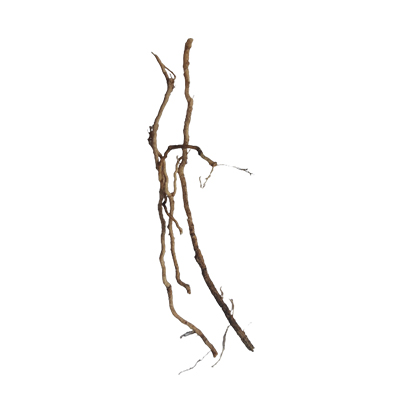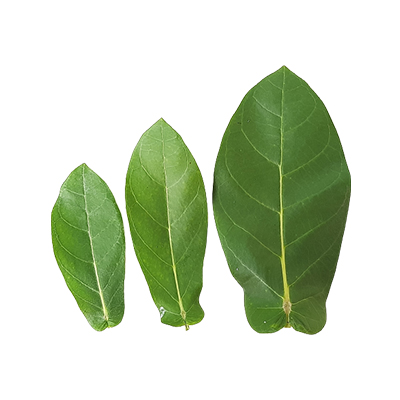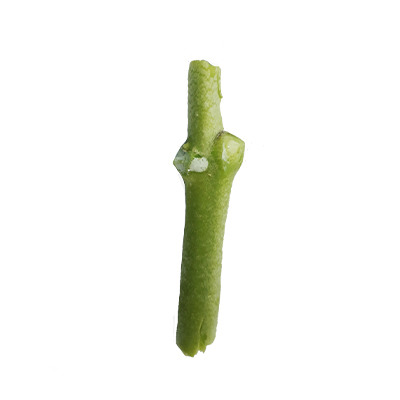Giant Milkweed
Calotropis gigantea (L.) W.T.Aiton
Apocynaceae
Location in our garden
Principal
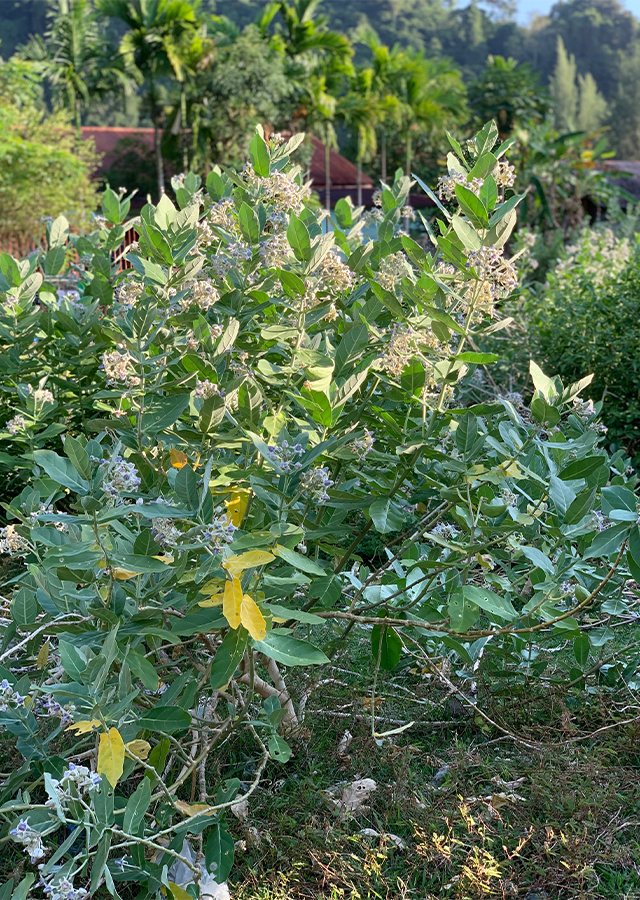
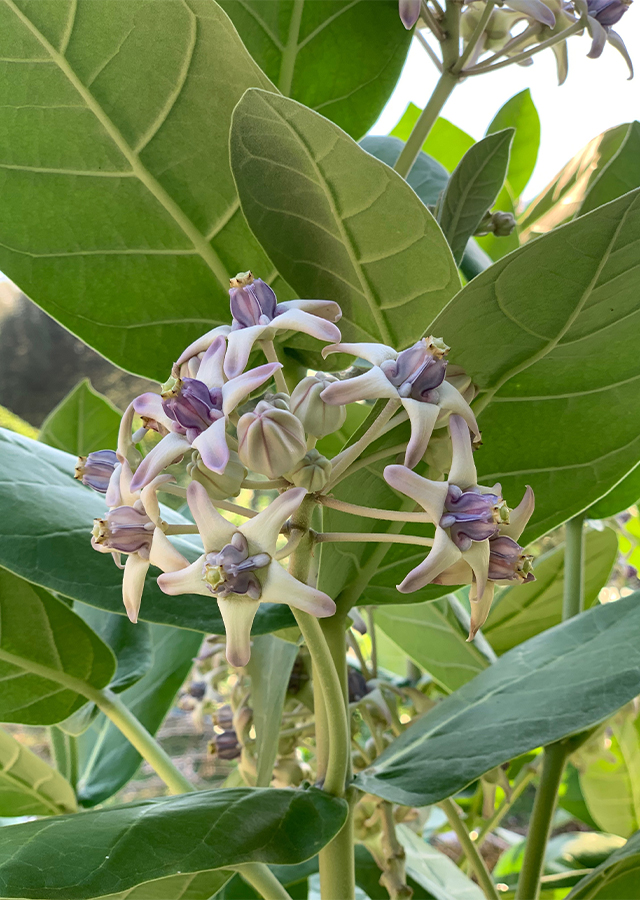
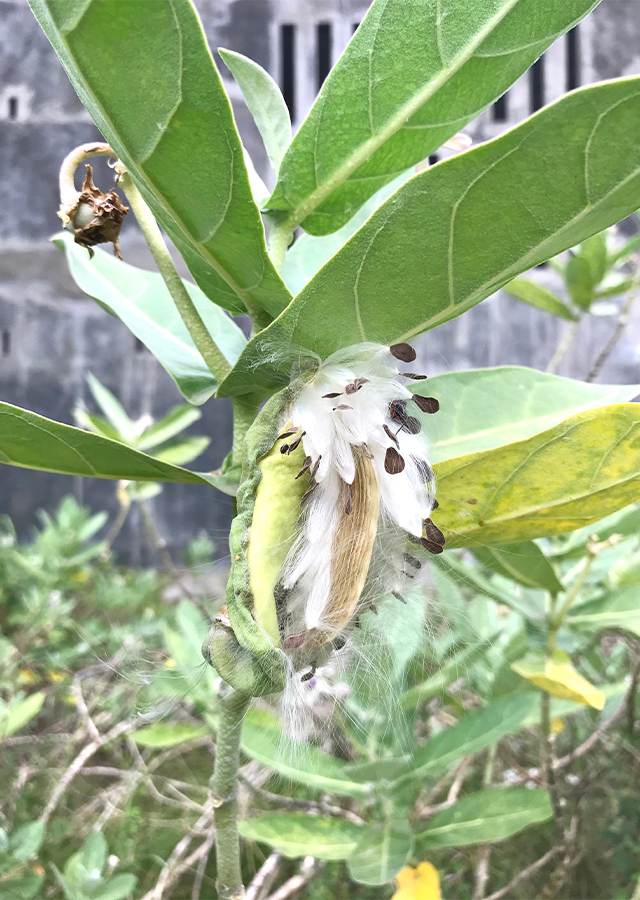
Synonym
Asclepias argentata Noronha
Madorius giganteus (L.) Kuntze
Periploca chinensis Decne.
Habitus
Shrubs. A high biomass, fast growing perennial shrub, 2 to 3 m in height
Part Used
Leaves
Flowers
Latex
Roots
Growing Requirements
Full Sunshine
Drought Resistant
Habitat
Riverbanks
Forest
Coastal
Grassland
Overview
Giant milkweed is native to Indian subcontinent, southern China, Indochina, Malaysia, and Indonesia. Naturally distributed in areas ranging from dry woods and stream banks to roadsides. The sap is toxic to mammals, and causes vomiting and intestinal irritation when ingested. The plant is harvested from the wild for a range of uses, but is especially valued as a medicinal plant and source of fibre. All parts of plants considered to be medicinally effective if taken in small doses.
Vernacular Names
Faux arbre de soie (French), Mudar yercum (India), Remiga (Malaysia), Po thuean (Thai), Kapal-kapal (Tagalog-Philippines), and Biduri (Indonesia).
Agroecology
It thrives upon soils where nothing else will grow, needing neither culture nor water. Tolerates drought and saline sites. Prefers a well-drained soil in a sunny position, at elevations up to 1,000 m. It has been considered a good plant for bringing wasteland under tillage and for reclaiming drifting sands.
Morphology
- Barks - pale.
- Leaves - obovate or oblong, 10-20 cm long, 3-8 cm wide, cottony beneath, pointed at the tip, heart-shaped at the base.
- Flowers - have a faint odor, not unpleasant, downy on the outside, arranged in axillary or subterminal, simple or compound, inflorescences. Corolla is 1.5-2.5 cm across usually white, sometimes dull-purple or purplish-lilac; the lobes are ovate-lanceolate, and spreading.
- Fruits - a follicle, recurved, 7.5-10 cm long.
- Seeds - ovate, 5-6 mm long, with a bright, silky-white coma.
Cultivation
Propagated by seeds or stem cuttings.
Chemical Constituents
Glukocide (calotropin, fuscharin, calotoksin), damar, floavil, alban, dehydrovomifoliol, pleurone, calotropagenin, flavonoids, terpenoids, tannins, and resin.
Traditional Medicinal Uses
- Root bark is considered emetic, used as a substitute for ipecac syrup.
- Latex is considered bitter, heating, purgative, caustic, acrid, expectorant, depilatory, anthelmintic. Used to induce abortion.
- Flowers are considered digestive, stomachic, and tonic.
- Studies have suggest analgesic, antimicrobial, antioxidant, antidiarrheal, anti-pyretic, antivenom, cytotoxic, hepatoprotective, wound healing properties.
- Bark used for dermatitis and syphilis treatment is so effective for the latter that plant is known as 'vegetable mercury'.
- Root bark is used in the treatment of dysentery.
- Leaves used as a poultice.
- Extracts of roots and leaves are used against abdominal tumors, cancer boils, syphilis, tuberculous leprosy, skin diseases, piles, wounds, rheumatism, and insect bites.
- Powdered flowers are useful in the treatment of colds, cough, asthma, catarrh, indigestion, and loss of appetite.
Part Used
Reference Sources
- Tropical Plants Database, Ken Fern. (2021). Calotropis gigantea (L.) Dryand. ex W.T.Aiton. http://tropical.theferns.info/viewtropical.php?id=Calotropis+gigantea. 02-02-2021.
- Flora Fauna Web. (No date). Calotropis gigantea (Linn.) Aiton f. https://www.nparks.gov.sg/florafaunaweb/flora/1/7/1774. 02-02-2021.
- Parvin, S., Kader, M.A., Chouduri, A.U., Rafshanjani, M.A.S., & Haque.M.E. (2014). Antibacterial, antifungal and insecticidal activities of the n-hexane and ethyl-acetate fractions of methanolic extract of the leaves of Calotropis gigantea Linn. Journal of Pharmacognosy and Phytochemistry Vol. 2 (5): 47-51. http://www.phytojournal.com/archives/2014/vol2issue5/PartA/12.1.pdf. 02-02-2021.
- StuartXchange. (2014). Philippines Medicinal Plants: Calotropis gigantea (Linn.) Dryand. http://www.stuartxchange.com/Kapal-kapal.html. 02-02-2021.
- Wang, Z.N., Wang, M.Y., Mei, W.L., Han, Z., & Dai, H.F. (2008). A New Cytotoxic Pregnanone from Calotropis gigantea. Molecules Journal List. Vol. 13(12). https://www.ncbi.nlm.nih.gov/pmc/articles/PMC6244834/. 02-02-2021.
